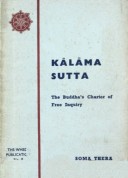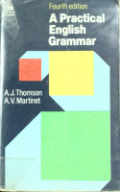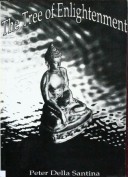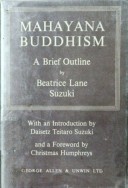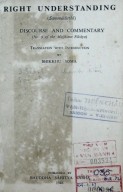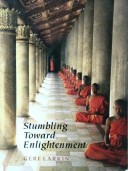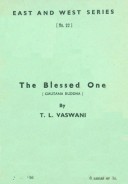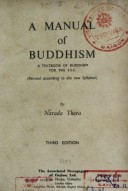Tìm Sách
Sách tiếng Anh-English >> Buddhist Formal Logic
Thông tin tra cứu
- Tên sách : Buddhist Formal Logic
- Tác giả : R. S. Y. Chi
- Dịch giả :
- Ngôn ngữ : Anh
- Số trang : 222
- Nhà xuất bản : The Royal Asiatic Society of Great Britain & Ireland
- Năm xuất bản : 1969
- Phân loại : Sách tiếng Anh-English
- MCB : 1210000004838
- OPAC :
- Tóm tắt :
FOREWORD (1968)
Revisions of works in any discipline invariably change the character of the original, but none so radically as revisions of books on logic.
As in dramas with intricate plotting, the slightest adjustment results in drastic changes. The revision of a book on logic is, even more than most, a complete rewriting. The writer’s various attempts to set down a coherent system will inevitably lead him to repudiate some points in earlier efforts, but this should not seem disturbing if one remembered that he is actually publishing a continuing, self-critical, self-revising “work-in- progress”.
The strictures on revisions may at first seem out of place in a foreword to a book which his never been published in any form whatsoever. A brief account of the publishing history of this work may help to clarify this anomaly. The first draft of this work was written in 1961-63. A year later, it was accepted for publication by the Royal Asiatic Society. In 1965, Messrs. Luzac & Co., the Society’s printers, requested a fair copy of the manuscript which could then be photographically reproduced. I agreed, but with the secret notion that the retyping of the manuscript would subtly Incorporate a rewriting as well. However, revision proved to be, as I perhaps should have known, far more involved than I had expected. In the face of these difficulties, I procrastinated. Two years passed.
While I was thus beset with my self-inflicted complications, the printers proceeded on their own to reproduce the very copy which they had hoped to replace with a “fair copy” from me. It was with a mixture of dismay and pleasure that I received the news in April 1968 from the Society that the galley proofs were now ready, and that, incidentally, I would have to bear the costs of any alterations exceeding 15% of the text. I was “hoist by my own petard”.
I am now constrained to present to the public a work whose inadequacies are all too clear to me. Its value may be, after all, in setting forth a construct, without and beyond which I could not have advanced my thoughts on the subject. The contretemps between the printers and myself may have turned out for the better after all for it is probable that, were it not for their enterprise, no part of my “work-in-progress” would have seen the light of day.
The question may be fairly asked: why encumber the literature with a work which one wishes beforehand to repudiate? The answer is that the mistakes embodied in the earlier enterprise might be Instructive. The coherent exposition of certain 111-formulated concepts, as well as their subsequent correction, seems a most effective way of developing my thesis. Further, the publication of this work in this form, gives me an opportunity — perhaps to be cherished — of anticipating the critics, by correcting myself.
To mention but a few examples: ray lengthy derivation of the Hetucakra can be greatly reduced by resort to a short cut; my theory of “narrow functions” is faulty and unmanageable; my interpretation of several topics, such as Nagarjuna’s reduction ad absurdum method and the catuskoti is far from correct.
Under the present circumstances, though it is not possible to abandon the old exposition In favour of a new, I have, nevertheless, been provided with a chapter in which some of my grosser mistakes can be corrected — a provision for which I am deeply grateful to the Society.
In May 1967, I was invited to speak before the opening Symposium of the Joint Meeting of the Association for Symbolic Logic and the American Philosophical Association at Chicago. My paper, “Buddhist Formal Logic and Its Consequences” represents my views at that time. At the symposium, Professor Karl Potter of Minnesota and Dr. Douglas Daye of Wisconsin, who commented on my paper, contributed valuable suggestions and posed a number of pertinent questions which I had not dealt with adequately in the body of the paper. I have since incorporated my answers into my paper, which in its expanded form is included in this book as “Introduction, 1967″.
The catuskoti has been considered an insoluble problem for centuries. In December of 1967 I read a paper (“A Tentative solution of the Problem of Four-Comer Negation”) at the University of Chicago, which I believe solves the problem. The solution depends on applying Bertrand Russell’s vicious-circle principle and my explanation of “unavoidable mistakes”, namely, “under cultural circumstances X, a mistaken theory y is inevitable”. The paper is unmanageable in length and needs further revision: It will appear as an article. For the moment, I can only say that it corrects my earlier explanation of the catuskoti which is erroneous.
One last word as to style: my Chinese-styled English, so faulty in grammar and aide ward in manner, is at least genuine, without being polished by my western friends. I hope its awkwardness will not annoy the readers too much, and its foreignness amuse them a little.
 Facebook
Facebook
 Google
Google
 Google+
Google+

